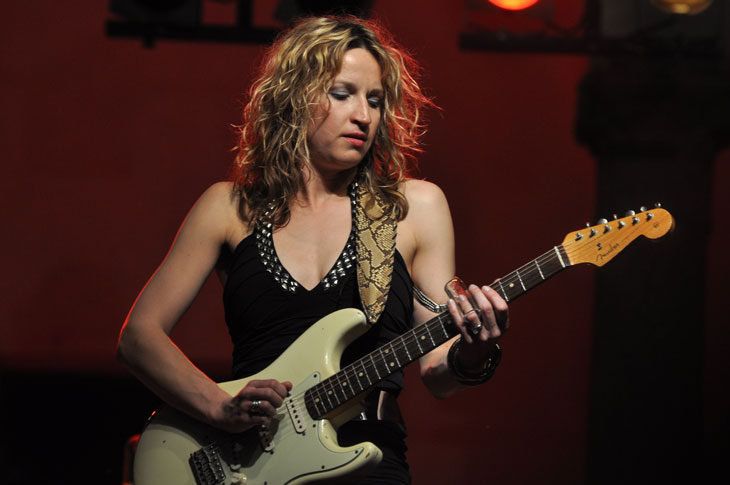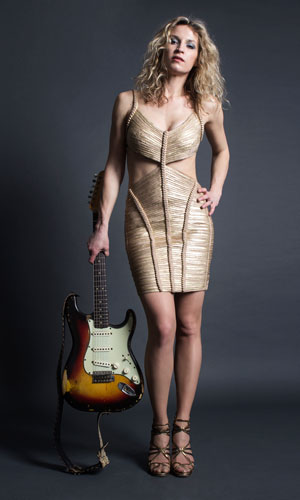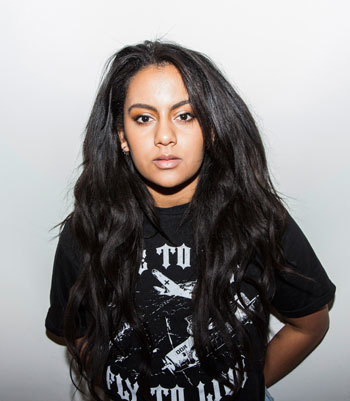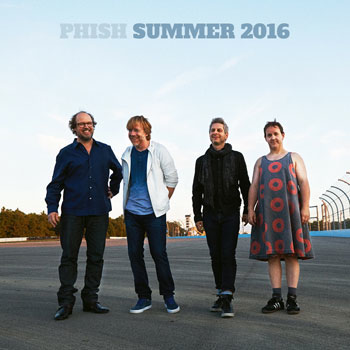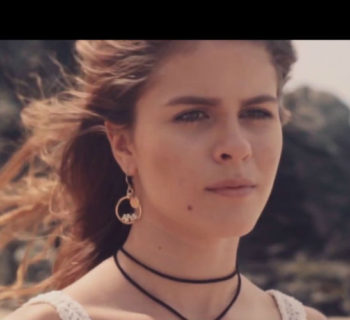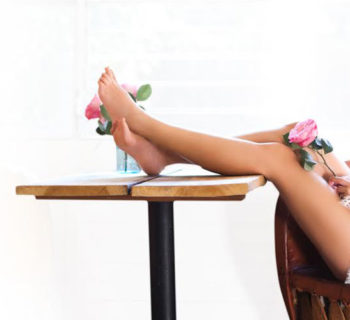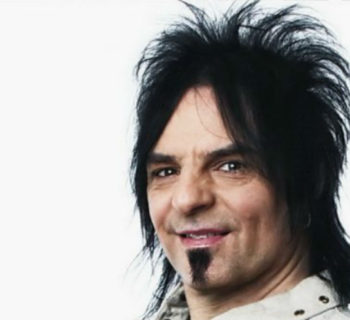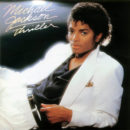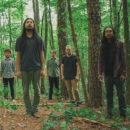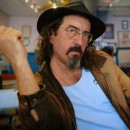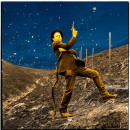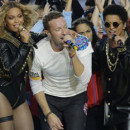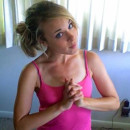Three Sides to Ana Popovic
Ana Popvic has American blues and roots embedded into the fabric of her being. Raised in Serbia to a musician father, a steady stream of blues records were discovered like forbidden treasure, brought home, and deconstructed note by note, with every nuance of tone and technique examined down to the granular level. In a time without Internet, Spotify, I-Tunes and the mounds of ubiquitous free content today, fans and players around the world begged, borrowed, and bootlegged the music into their hands.
Growing up, Popvic’s heroes were Buddy Guy, Robert Johnson, Jimi Hendrix, and Stevie Ray Vaughan. When her family fled to Amsterdam during the Balkan War in the ‘90s, she started playing in bands and eventually emigrated in 2007 to the United States, where she founded her own band that’s been a favorite on the blues and festival circuit ever since. She has played for the last three years on the Experience Hendrix Tour, jammed with Buddy Guy and other top tier musicians, and when she needs a certain sound or solo for her new album, she texts Joe Bonamassa.
Meet Ana Popovic
So your album “Trilogy” just came out?
AP: That’s correct.
That’s a pretty ambitious project—23 tunes, right?
AP: That’s right 23 tunes and three different styles of music. It is something I’ve had in mind for quite some time and finally, I was so happy to make it work.
You’ve had so much music inside you, it had to get out, huh?
AP: I had! You know I’ve always had songs. Some of them date from a long time ago. I am finally relieved to record them and put them out.
This time I had a plan and an idea of what type of musicians would be perfect for what I’m hearing. In the past, of course, I would always record with one band. I am pretty demanding when it comes to musical styles. I wanted it to sound bluesy; I wanted it to sound roots; I wanted the musicians to be able to play funk and be groovy, and I wanted to play rock. I don’t record a whole lot of them on each record, but when I record them I want them to sound exactly right. I am pretty demanding as far as that goes.
I was going back and forth on whether I should have one great band record or three great bands that have really mastered those specific styles of music. I went, luckily, for that second option. Now I don’t know how I will do it in the future. I can’t imagine going back to the previous way of recording. I’m very fortunate that way, that this time in my career I can make some phone calls and get the exact people I really admire, who have really mastered what they do, and have them record those particular songs. That’s how I did it. It was so nice to see how some of those songs how fast they actually reached what I heard them as several years ago. It happened very naturally when you have the right musicians.
Yeah, you have the right musicians and they are not stretching, just laying down what they are typically capable of doing.
AP: Absolutely and that always just surpasses my expectations. I could only imagine a great funk song or a great jazz song, but when you have them play it is even better than what I imagine.
I noticed your guest musician list is spectacular, including Joe Bonamassa and Robert Randolph. How did getting Joe on the record come about? Did you know him from playing shows over the years?
AP: We played quite a few shows together, and I’ve been on his Blues Cruise. It was just one text message: “Do you want to play a song?” and 20 seconds later he replied “Yes.” I sent him two songs and he chose this one song “Train.” It’s a really typical Joe song—a real sultry kind of R&B, a real groovy thing. George Porter Jr. is on bass and fantastic Raymond Weber on drums. It’s kind of a one-night-stand song, and I needed a great fiery solo at the end. When I recorded and heard it, I thought, “This is just perfect for Joe.” I sent him two tracks and he right away responded he wanted “Train.” He really didn’t hold back, none of the guys did.
For Robert it was the same. I recorded “Hook Me Up” which is a fantastic Johnny Guitar Watson song, not really well known. Those melodies and the chord progressions, I immediately thought of Robert; this is what he does.
So you sent the track to him and he put his part on?
AP: Exactly. He reserved his studio in L.A. two days from then and the song was done.
I was listening to one of your shows at the Blues Festival in Santa Cruz, and you were doing a Hendrix tune and your slide part sounded a lot like Robert Randolph. Was that conscious, or do you listen to a lot of him and think you have been influenced by him?
AP: You know, you are the first person to say that and thank you. I love his style, but I think our styles are completely different. I don’t play open tuning, I really listen to a lot of Elmore James, and I listen to Robert, but I don’t really play like that because I don’t play the open tuning. All my studying of slide guitar really came from Sonny Landreth, Elmore James, and Robert Roy Rogers—those people mostly.
When the first VHS came out we would actually just examine the concert, like we would study what Stevie did with his right hand and what the drummer’s doing when playing a shuffle. That was that kind of watching we would do.
When you first discovered the blues, was it right around when you started playing, around age 15?
AP: Oh no, no, much earlier. I think I probably discovered blues earlier than a lot of American musicians did because it was in my home ever since I was two years old. My father listened to it on a daily basis. He would get us around the guitar and play and we would sing. He wouldn’t play anything else, and I loved it.
I picked up guitar pretty late, when I was about 13, but didn’t play solos before I was 19, when I had my first band and had to come up with a few solos. I would play, but only a few, then I would add a song, and a song, and a song. By the time I moved to Holland, I was playing solo guitar in every song.
Now were those records common in Serbia, or did your dad have to go seek those out?
AP: Absolutely! He would go and swap them with friends and whoever chose to go to the West would bring back some records. He would always manage to have a new Stevie Ray Vaughan record in the house. We had Hendrix, Stevie, Clapton, all the blues stuff at that time. When the first VHS came out we would actually just examine the concert, like we would study what Stevie did with his right hand and what the drummer’s doing when playing a shuffle. That was that kind of watching we would do.
So your skills eventually overshadowed your dad’s guitar skills?
AP: You know, I still admire that generation. I admire the slow hand kind of playing. That is the reason I actually recorded a record with him last year. He came for Father’s Day, just because I wanted to feature that specific time and that specific generation because I still admire it. I think you need to be born into different times to be able to play slow hand like these guys.
At some point he couldn’t teach me anymore, and I had to go on and have a teacher. But we still jam when we get a chance and we sit at home. We like the kids to grow up around the instruments and the jam session. So we still do it when we meet.
I know you did two stints with the Experience Hendrix tour and that has some great names on it with Buddy Guy and Kenny Wayne Shepherd. What is your favorite Hendrix tune?
AP: I’m not really into the hit songs, so I’m searching for the hidden treasures. I guess if you really want to know I can say “Belly Button Window” and obviously the songs I have been playing on the Hendrix tour, which is “House Burning Down” and “Can You See Me.” I do play “Crosstown Traffic” with my own band.
It was incredible to be a part of. I was the only female that was called up three times now. It is really a family. They are very supportive, especially of me, the only female guitar player on the tour. I was the only slide player on the tour, which was nice because I like to bring something new and different.
For the Hendrix tour, how do you guys pick the tunes? Do you guys just get among yourselves then and figure out who is going to do what?
AP: Well, it was easy. I didn’t really have any problems, because the songs I chose, no one else really played. I don’t like to mess with the hit songs. I think it is beautiful to bring out something form the B-sides and have people actually listen to something different.
It seems like you’re on the road constantly. How many shows do you typically play per year?
AP: I don’t play more than a 130 maximum. I think that’s a good number—not too little and not too crazy. Some of the blues guys like to go to 250; I can’t do that. I love my everyday life. I like the breaks that I get from the road. I have time to write songs and recharge my batteries.
This year we are going to Australia for the first time. We’ve been to Japan, to Dubai, Indonesia, whatever, all the European places. All the Europeans like France and Germany would like us back. We sell out, then they want us back in like five months, but we say “no.” It’s better to hold on and come back with something new. That is our strategy, and it’s been working.
Do you see any difference in the European versus the American audiences?
AP: In a way, yeah, of course. In France people don’t speak English, so they miss out on a big part of my music, which are lyrics. However, they are very supportive and have great festivals. It is always a wonderful thing to play there.
Germany is a great listening crowd. They come at 8 o’clock and are ready for the show. My favorite, of course, is American audiences, because that is why I moved here. I fell in love with the States, and that is just my place. I feel that I can completely experiment with my music on all the levels. Europe is a little more conservative I would think.
Any favorite shows?
AP: That’s difficult. We have quite a few in California. Russian River was wonderful, it brings great memories because that was my first time performing with Buddy Guy and followed by many, many performances together. But that was the first one. I saw Buddy when I was 13, back in Belgrade and he had a similar show. He was the only person I actually asked for their autograph after the show. So, to have him call me up was a pretty big deal, and that was a few years back in Russian River.
I noticed on your albums, your genres are pretty wide, with some jazz things in there, but your live stuff is more blues. Is that correct?
AP: Live stuff is really everything from jazz, from blues, from funk to soul. Stuff you can dance to, lots of guitars.
The jazz part of Trilogy was actually the first time I had tried anything with jazz standup and actually writing jazz songs. It was the first time I had the A-crew with Delfeayo Marsalis, which is an incredible experience. I studied jazz many years ago back in Holland and came back to my jazz chops and started again, changed the guitar sound, took a Gibson, and played the jazz part of Trilogy, which is called “Midnight.”
Speaking of guitars, I’ve noticed you’re mainly a Strat player. Is that an original ’64?
AP: Yes it is, an old original ’64.
Have you ever tried to play any of the others like Les Paul, stuff like that?
AP: yeah, I’ve tried many guitars. I’m strictly a Strat person. It responds really great to the attack. It’s never ending inspiration.
And your rig, you’re playing a Mesa Boogie ?
AP: Uh, no, I’ve got an old original 66 super reverb.
Oh, really?
AP: Yeah. I have a Bassman and I usually use them both. Sometimes for recording I’ll use the Mesa Boogie Mark lV, as well. So those are my three favorite mainly. The Mesa is great for the modern rock sound, the Super Reverb of course for all the reverb and the treble and old school tone. Then the Bassman gives you the bottom.

